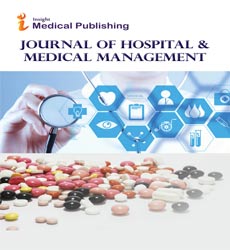A Prospective Study of Patterns of Presentation and Management of Cases of Emergency Acute Abdominal Surgeries in a Tertiary Care Hospital
Hamsa P*
Department of General Surgery, Vydehi Institute of Medical Sciences and Research Centre, Bangalore, India
Published Date: 2025-03-26DOI10.36648/2471-9781.11.2.395
Hamsa P*
Department of General Surgery, Vydehi Institute of Medical Sciences and Research Centre, Bangalore, India
- *Corresponding Author:
- Hamsa P*
Department of General Surgery, Vydehi Institute of Medical Sciences and Research Centre, Bangalore, India
E-mail:hamsapreddy@gmail.com
Received date: November 21, 2023, Manuscript No. IPJHMM-23-18148; Editor assigned date: November 23, 2023, PreQC No. IPJHMM-23-18148 (PQ); Reviewed date: December 07, 2023, QC No. IPJHMM-23-18148; Revised date: March 19, 2025, Manuscript No. IPJHMM-23-18148 (R); Published date: March 26, 2025, DOI: 10.36648/2471-9781.11.2.395
Citation: Hamsa P (2025) A Prospective Study of Patterns of Presentation and Management of Cases of Emergency Acute Abdominal Surgeries in a Tertiary Care Hospital. J Hosp Med Manage Vol:11 No:2
Introduction
Acute abdomen refers to signs and symptoms of abdominal pain and tenderness, a presentation that often requires emergency surgical therapy. Many diseases, some of which are not surgical (medical or gynaecological emergencies) or even intra-abdominal in origin can produce acute abdominal pain and tenderness mimicking surgical emergencies which need to be differentiated from urgent cases needing operation. Appendicitis is more common in young age; biliary disease and bowel obstruction or perforation in middle age whereas infarction and diverticulitis of intestine are more common in the elderly.
This challenging clinical scenario requires a thorough and expeditious workup to determine the need for operative intervention and to initiate appropriate therapy. Emergency laparotomy is a common high risk surgical procedure done for management of patients with acute abdomen or trauma. Emergency midline laparotomies are the most commonly performed surgeries for conditions like perforative or obstructive disorders of GI tract and trauma laparotomies for blunt or penetrating abdominal injuries.
Aim and objectives
• Ascertain the causes of acute abdomen and abdominal trauma and assess the varied clinical presentations as per the causes.
• Determine the effects on the operative outcomes depending on the time of presentation (early or late) and prioritize the workup of the patients.
• Correlate the intraoperative findings with pre-operative clinical findings and investigations and anticipate the possible postoperative complications and need for ICU or prolonged hospitalization based on preoperative and intra operative findings.
Description
A prospective observational study of 113 patients with surgical acute abdomen undergoing emergency exploratory laparotomy, during the period of 2019-2021. From this study, preoperative detailed history and thorough physical examination and necessary laboratory and radiological investigations was done to arrive at peri-operative diagnosis. Data was collected from patients and from hospital records.
Among 113 patients both male and female, were included in our study with an M: F ratio of 4:1. 59.3% patients were between the age groups of 20-50 years. Abdominal pain and tenderness were the primary presenting clinical symptoms in about 88% patients. Basic blood investigations and radiological investigations like X-ray abdomen, USG abdomen and CECT abdomen and pelvis helped in preoperative diagnosis in traumatic and atraumatic acute abdomen patients. In case of traumatic abdomen patients FAST/eFAST also helped in diagnosis of organ injury.
Delay in presentation, delay during investigations and in decision for surgery not only increases hospital stay but also increases the chances of morbidity and mortality. Most of the laparotomies should be timed within 24 hrs of the patient reaching the hospital or Institute. This is a general consensus agreed to by all the supportive authors in their respective studies.
Conclusion
It is concluded from our study that all patients of acute abdomen presenting to the Emergencies of any institution must be attended to urgently and with utmost care and attention. Thorough clinical examination is a prerequisite for arriving at a diagnosis in most of the atraumatic acute abdominal cases while, basic blood investigations, X-ray chest and erect abdomen and USG abdomen will further clinch the diagnosis. Hence the time spent on investigations should be minimum and early shi t of patients to operative theatre should be of prime concern. Patients who underwent laparotomies within 24 hrs of presenting complaints have shown the best results in this study.
Open Access Journals
- Aquaculture & Veterinary Science
- Chemistry & Chemical Sciences
- Clinical Sciences
- Engineering
- General Science
- Genetics & Molecular Biology
- Health Care & Nursing
- Immunology & Microbiology
- Materials Science
- Mathematics & Physics
- Medical Sciences
- Neurology & Psychiatry
- Oncology & Cancer Science
- Pharmaceutical Sciences
